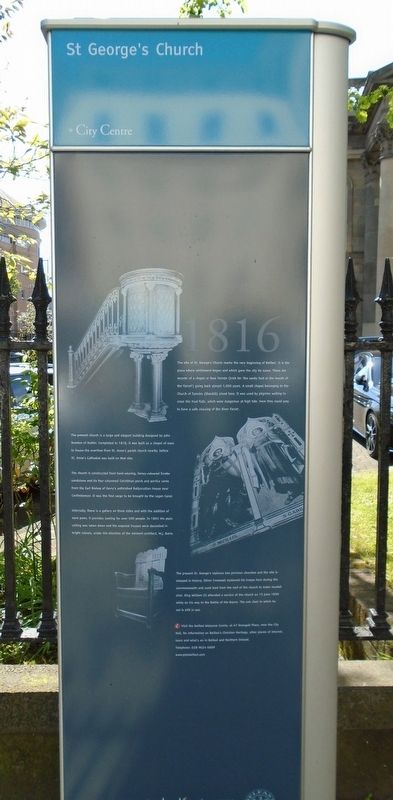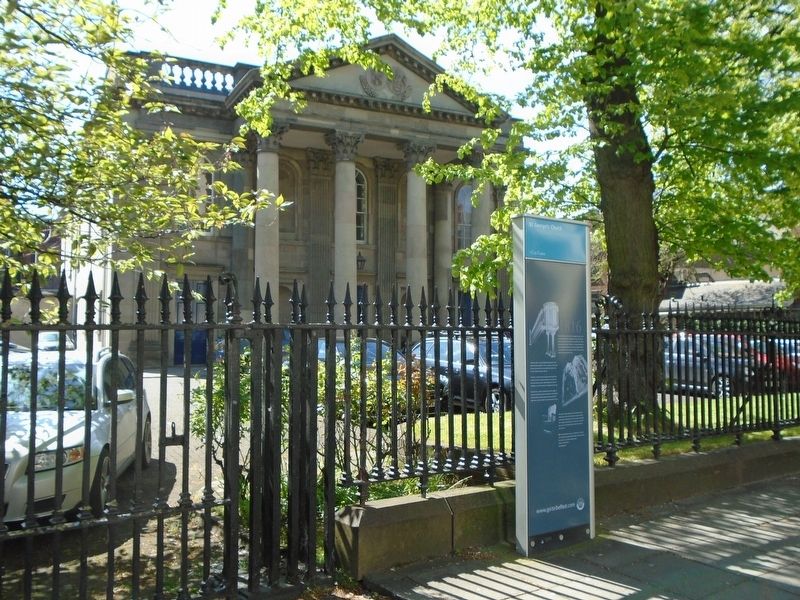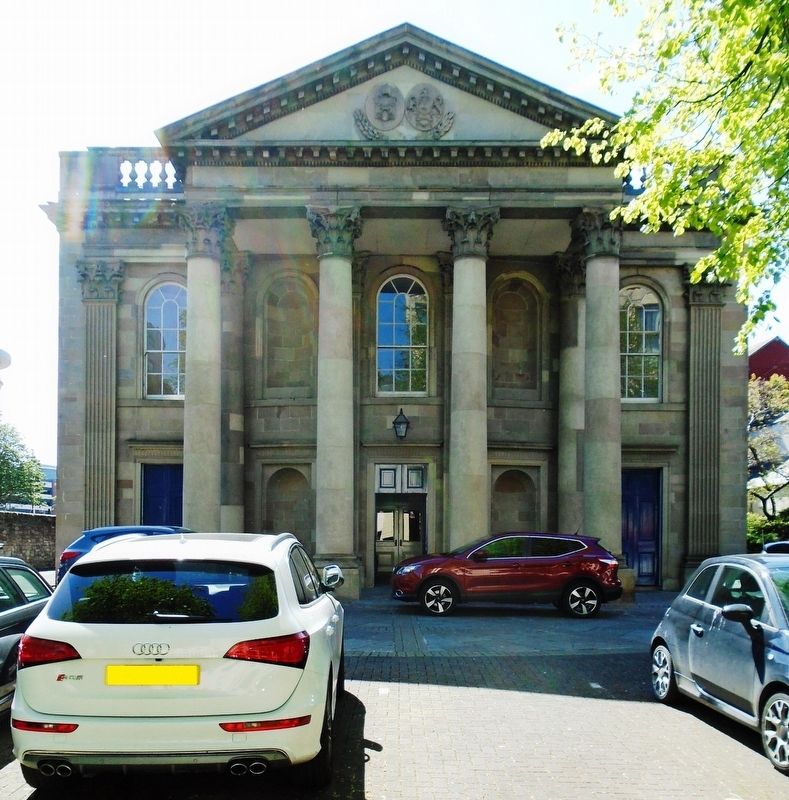St. George's Church
City Centre
— 1816 —
The site of St. George's Church marks the very beginning of Belfast. It is the place where settlement began and which gave the city its name. There are records of a chapel at Beal Feirste (Irish for 'the sandy ford at the mouth of the Farset') going back almost 1,000 years. A small chapel belonging to the Church of Sancles (Shankill) stood here. It was used by pilgrims waiting to cross the mud flats, which were dangerous at high tide. Here they could pray to have a safe crossing of the River Farset.
The present church is a large and elegant building designed by John Bowden of Dublin. Completed in 1816, it was built as a chapel of ease to house the overflow from St. Anne's parish church nearby, before St. Anne's Cathedral was built on that site.
The church is constructed from hard-wearing, honey-coloured Scrabo sandstone and its four columned Corinthian porch and portico came from the Earl Bishop of Derry's unfinished Ballyscullion House near Castledawson. It was the first cargo to be brought by the Lagan Canal.
Internally, there is a gallery on three sides and with the addition of nave pews, it provides seating for over 500 people. In 1865 the plain ceiling was taken down and the exposed trusses were decorated in bright colours, under the direction of the eminent architect, W.J. Barre.
The present St. George's replaces
two previous churches and the site is steeped in history. Oliver Cromwell stationed his troops here during the commonwealth and used lead from the roof of the church to make musket shot. King William III attended a service at the church on 15 June 1690 while on his way to the Battle of the Boyne. The oak chair in which he sat is still in use.Erected by the City of Belfast.
Topics. This historical marker is listed in these topic lists: Architecture • Churches & Religion • Man-Made Features. A significant historical year for this entry is 1816.
Location. 54° 36.029′ N, 5° 55.502′ W. Marker is in Belfast, Northern Ireland. Marker is at the intersection of High Street and Victoria Street, on the left when traveling west on High Street. Touch for map. Marker is at or near this postal address: 105 High Street, Belfast, Northern Ireland BT1 2AG, United Kingdom. Touch for directions.
Other nearby markers. At least 8 other markers are within walking distance of this marker. High Street (a few steps from this marker); Albert Clock (within shouting distance of this marker); James Holmes (about 120 meters away, measured in a direct line); Custom House Square (about 150 meters away); Anthony Trollope (about 180 meters away); Custom House (about 180 meters away); Calder Fountain (about 180 meters away); Sir Samuel Ferguson (about 180 meters away). Touch for a list and map of all markers in Belfast.
Also see . . .
1. Welcome to The Parish Church of Saint George, Belfast. (Submitted on June 10, 2019, by William Fischer, Jr. of Scranton, Pennsylvania.)
2. The Parish Church of St. George, Belfast on Facebook. (Submitted on June 10, 2019, by William Fischer, Jr. of Scranton, Pennsylvania.)
3. Visit Belfast. (Submitted on June 10, 2019, by William Fischer, Jr. of Scranton, Pennsylvania.)
Credits. This page was last revised on June 10, 2019. It was originally submitted on June 10, 2019, by William Fischer, Jr. of Scranton, Pennsylvania. This page has been viewed 172 times since then and 20 times this year. Photos: 1, 2, 3. submitted on June 10, 2019, by William Fischer, Jr. of Scranton, Pennsylvania.


